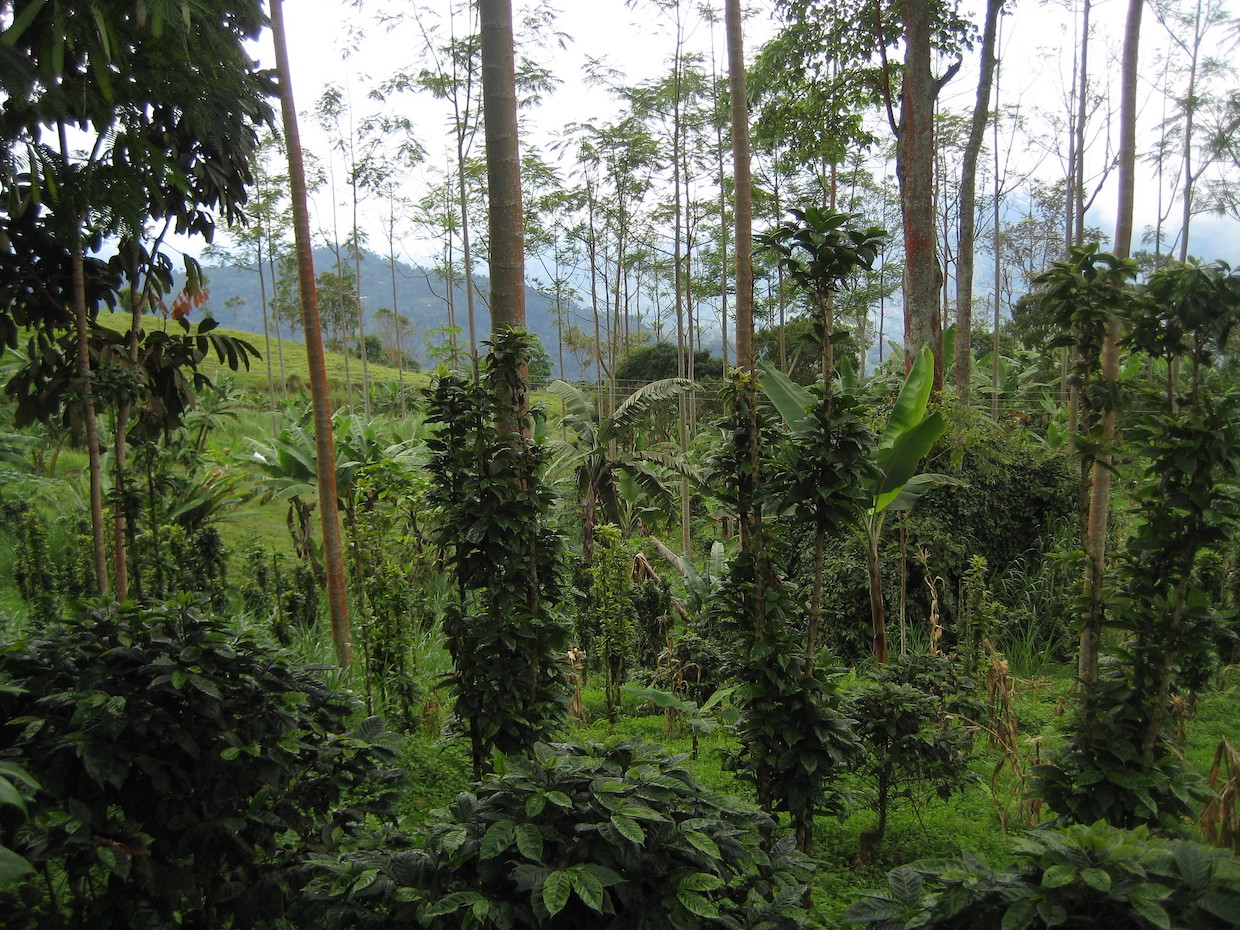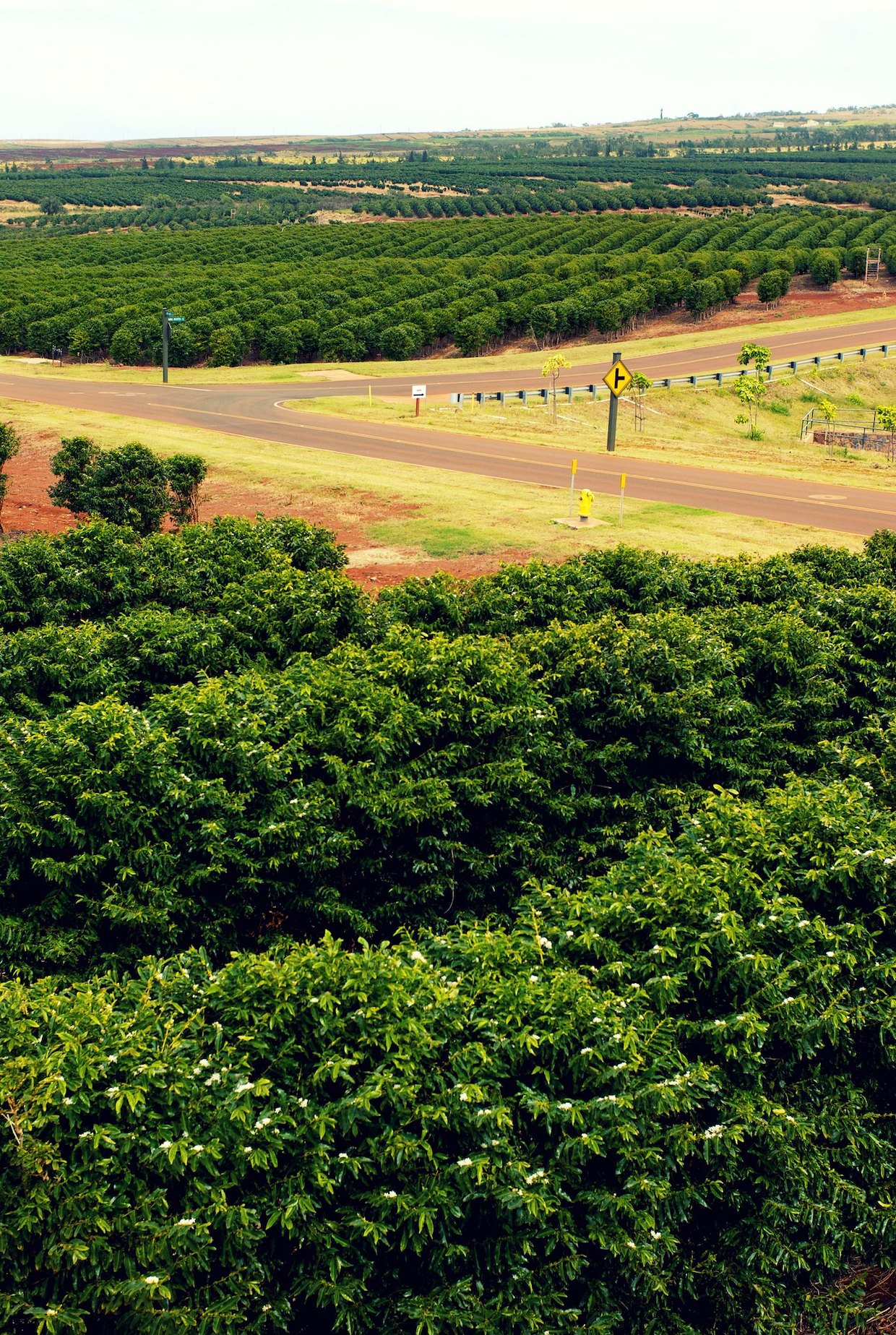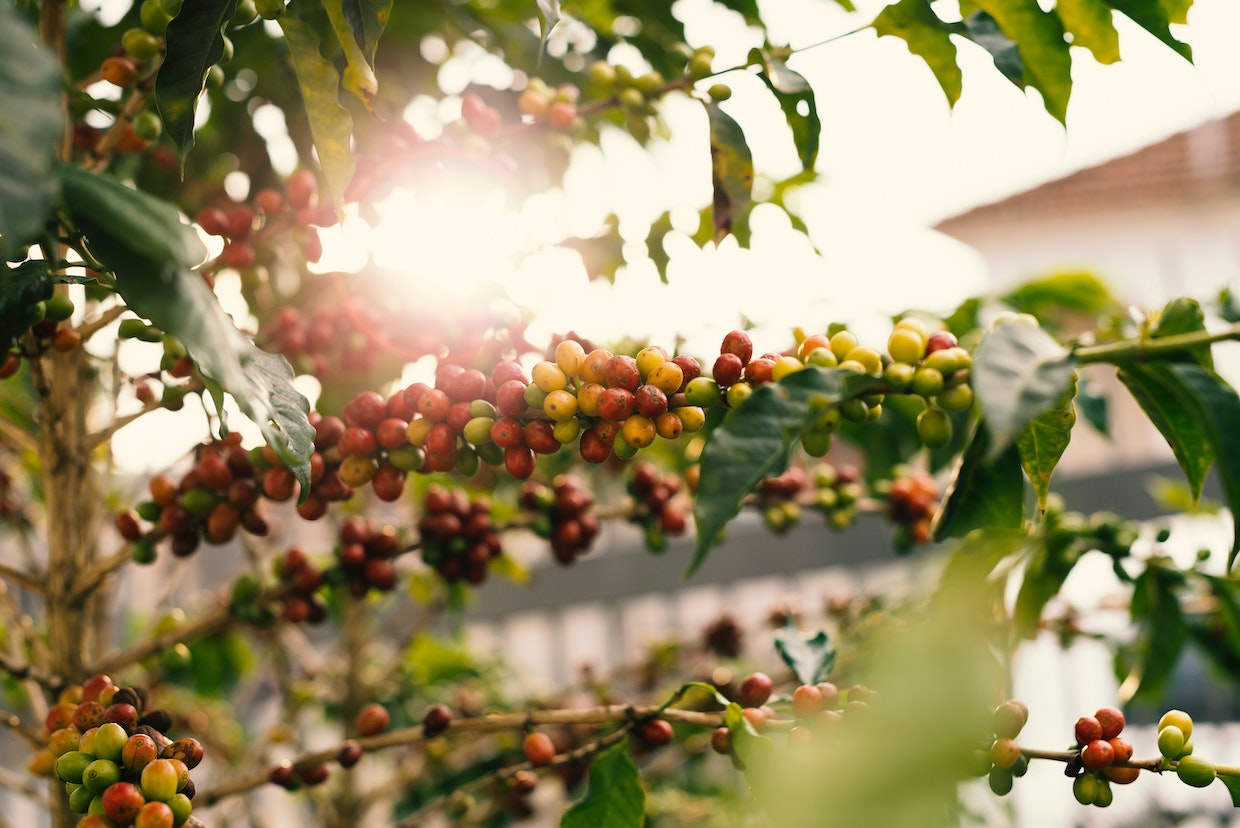The first piece in this mini series provided an overview of different methods of commercial coffee production and how they may affect the environment and climate change, defining two ends of the agricultural land-use spectrum: integrated agroforestry and deforested monocropping.
Now it’s time to explore in more detail how these common land uses in coffee production impact the natural environment.
In an effort to deconstruct such a complex topic, let’s explore four key areas of environmental impact. These may ring a bell for those of us who grew up alongside the fictional environmentalist superhero Captain Planet: Earth (Soil), Wind + Fire (Climate Change), Water and Heart (Biodiversity).
Of course, in the non-cartoon version of reality, each of these elements are associated with complex ecosystems and and broader climatic realities and thus subject to mutually reinforcing causes and effects. That is both the beast and beauty of agriculture.
However, since this series remains focused on “deconstructing sustainability in coffee,” let’s deconstruct these elements separately, under the lenses of these two distinct land uses.
[Note: This is part of an ongoing editorial series with sustainability expert Cory Gilman focused on deconstructing the subject of sustainability in coffee. Follow the full series here. Daily Coffee News does not engage in sponsored content of any kind and all views or opinions expressed in this piece are those of the author/s.]
Agroforestry Systems
Broadly speaking, agroforestry refers to land uses in which trees and shrubs are integrated with crops or farmed animals.

Coffee plants growing under tree cover. “Coffee farm in Colombia” by U. S. Fish and Wildlife Service – Northeast Region is marked with Public Domain Mark 1.0.
Traditional coffee cultivation methods involving complex shade canopies and waterway buffering have proven to have a gentler negative environmental impact, while boosting positive aspects such as biodiversity, conservation and even quality. It can also be regenerative.
Conserves Water
Water is an endangered resource, and that’s bad news for everyone. Coffee is, by nature a water-intensive crop. While this is in large part due to post-harvest processing requirements, the amount of shade in coffee growing is a significant factor.
A shade canopy can lead to dramatic reductions in water usage. Soil evaporation rates can decrease 41% with 60-80% cover, and demand for evaporative transpiration (a process where roots absorb water, then release them as vapor through leaves) can be reduced by 32% with over 30% shade. The improved soil plays a role, as well, increasing moisture retention, minimizing erosion and preventing runoff into freshwater sources.
Replenishes Soil
Soil fertility is generally considered a key indicator of crop health and overall environmental health. Coffee grown in shaded soil tends to be more robust and richer in organic matter. This is a direct result of the primary characteristic of agroforestry systems: a complex shade canopy.
Given protection from harsh ultraviolet exposure, the natural development of humus can occur. Nutrient cycling through plant litter decomposition can boost enzymatic and microbial activity while fixing nitrogen. This mineralizes nutrients so they can be brought up from deep soil layers into shallow ones, which in turn helps prevent soil loss caused by erosion, runoff or further leaching. Such benefits may be particularly pronounced in the absence of inorganic agrochemicals, allowing soil to self-regulate to an optimal level of acidity while maintaining mineral balance.
Fosters Biodiversity
Agroforestry systems can actually meet — or even exceed — the biodiversity levels of natural forests, maintaining critical habitat for countless species. Shade richness has a particular impact on the diversity and abundance of pollinators, which are of high importance to conservationists.
A global meta-analysis of biodiversity in coffee agroforestry found total species richness was 46% higher in agroforestry systems as compared to monocrop plantation systems.
Providing a robust canopy structure offers a refuge for diverse flora and fauna, which not only protects entire ecosystems but the coffee itself. Both polyculture farms and agroforestry have high levels of nectivores, granivores, frugivores and insectivores, which all provide essential ecosystem services like seed dispersal, pollination, natural pest control and disease mitigation.
For example, abundance of bees and butterflies help the coffee plant proliferate, while birds and lizards eat unwanted pests. Certain forest-dwelling fungi, snails and mites can even eat coffee rust spores. Biodiversity can create both a balance and buffer, fostering sustained production and fortitude.
Fights Climate Change
While the vast majority of climate change reports focus on carbon emissions reduction, an additional strategy revolves around forests.
Coffee farms currently comprise approximately 11 million hectares of ecologically fragile land. A landmark study in 2014 found that organic shaded coffee maintained carbon (above ground and in soil) equal to that of nearby forests. It also found that traditional polyculture coffee maintained more carbon than all other land-use modalities studied — indicating if only 10% of fully unshaded coffee production was converted to “scant-shade cover,” an additional 1.6 billion tons of above-ground sequestered carbon would result.
In short, coffee farms can become significant carbon sinks. Beyond carbon in and of itself, coffee forests are also critical in creating microclimates that cool the surrounding air by up to 9°F and increase ground moisture, mitigating the pervasive phenomenon of land becoming hotter and drier. This is especially important given the fact that most species of coffee under the threat of extinction due to climate change.
Monocrop Plantations
Broadly speaking, monocropping refers to the production of a single crop on the same piece of land year after year. In the context of coffee, this is colloquially associated with “plantation”-style farming, in which large swaths of deforested land may be filled with rows upon rows of coffee trees in full sun.

“Coffee Plantation” by mikefats is licensed under CC BY 2.0.
Monocrop systems are typically designed to maximize output in the short-term, although the natural tradeoffs are long-term environmental integrity, crop diversity and biodiversity.
Wastes Water
Sun-grown coffee requires a lot of water, about 140 liters per cup of finished brew, according to one popular estimate. Without a shade canopy to protect it from the sun and provide foliage decomposition, coffee’s soil becomes more arid. With less moisture retention for roots to draw upon, combined with significantly more ultraviolet exposure, sun-intensively grown plants are much thirstier than their shaded counterparts.
As sun-grown coffee tends to require more inorganic inputs overall, chemicals begin to build in the soil and eventually lead to nitrogen leaching. A toxic combination of chemical runoff and erosion-driven sediment deposits inevitably pollute nearby water sources. Evaluating pesticide usage alone, one recent study found there is 44.7% chance of surface water contamination and 23.7% chance of groundwater contamination on coffee plantations.
Degrades Soil
While the first thing one might notice on an intensive coffee farm is the absence of non-coffee trees above ground, some critically important reactions are likely happening underfoot.
Sun exposure and lack of nutrient cycling alters the physical, chemical and biological composition of soil. With only a single species (coffee) to do the heavy lifting of providing and extracting matter, elements like oxygen and carbon, as well as micro and macronutrients, are pulled from the soil without an opportunity to replenish. Soil pH, EC and organic matter decrease, as do microbial and fungal activity. This necessitates using a plethora of inorganic inputs to compensate.
While temporarily able to backfill for soil’s deficiencies, these chemical inputs can result in continued, escalating long-term degradation while creating chemical dependency. Erosion follows, with sun-grown coffee farms suffering twice the soil loss, perpetuating a vicious cycle of soil depletion and chemical buildup.
Diminishes Biodiversity
For coffee, the proverbial canary in the coal mine may actually be the absence of all native birds. Sun-grown coffee eliminates forests, a critical habitat for birds, plants, fungi, amphibians, worms, insects and mammals. Diminished pollinator populations perpetuate biodiversity loss, as cross-pollination suffers.
The conclusion of most studies examining the effect of coffee on biodiversity is that biodiversity declines in conjunction with declining with shade cover and biodiversity loss intensifies as farming techniques do. Ultimately, any threat to flora and fauna is a threat to the multitude of ecological processes they provide.
Accelerates Climate Change
Here’s a not-so-fun fact: By one estimates, every cup of coffee consumed reflects the destruction of around one square inch of rainforest. I literally choked on my Ethiopian blend when I came across that one.
According to the latest edition of the Coffee Barometer, coffee is expected to cause the loss of 10-20 million hectares of forest by 2050, releasing 1.65-3.3 gigatons of carbon. Clearing carbon-sequestering trees has tangible impacts on microclimates as well, with surrounding air becoming drier and hotter. Research has shown that average monthly temperatures were approximately 6°C higher in full-sun coffee areas than in agroforests and native forests.
The Moral of the Story
If we return to the initial question of how coffee can both be regarded as an environmental hero and villain, it’s clear that the answers lie in these two different approaches to cultivation.
In a 2021 story by Vox, University of Michigan researcher Ivette Perfecto provided profound summary of coffee’s existential dilemma in the face of climate change. She suggested that the crisis is not climate change itself, but coffee’s existing ability to withstand it.
“The kind of system that is intensive coffee plantations, or very large-scale coffee monocultures, I see that as the crisis,” Perfecto told Vox.
Stay tuned for the third piece in this mini series, in which we’ll explore the complicated intersection between ecosystem management and economic management.
Cory Gilman
Cory Gilman is never happier than when working to build equitable, inclusive and regenerative coffee systems — with a passion for prosperous farmer livelihoods as a precursor for broader environmental and social outcomes. Prior to focusing specifically on coffee, she spent a decade advancing sustainability initiatives for leading CPG companies. After a year living with and learning from smallholder farmers across Southeast Asia, Cory knew she wanted to spend her career supporting the people behind every cup and the places they call home. "She holds a Masters degree in Sustainable Development and Social Innovation, and is eager to support more resilient and equitable supply chains across sectors.








Corey … it’s inaccurate to state that agrofor coffee conserves water.
Whereas it’s true that shade will decrease evapotranspiration of coffee, readers should be reminded that the shade trees themselves transpire and that when added to coffee, evapotranspiration per unit area is mostly higher for agroforest than sun coffee. Dr Vaast, a noted coffee physiologist, once told me as much and published research bears that out.
“Coffee transpired more per unit leaf area in full sun than under shade, an indication of higher environmental coffee stress in non shaded conditions. Nonetheless, coffee daily water consumption per hectare was generally higher under shade than in full sun due higher vegetative growth of shade-grown coffee plants.”
Van Kanten, R., & Vaast, P. (2006). Transpiration of arabica coffee and associated shade tree species in sub-optimal, low-altitude conditions of Costa Rica. Agroforestry Systems, 67(2), 187-202.
This is not to say that shade trees always compete – there may well be cases where they help coffee through the process of hydraulic lift from deeper soil zones that coffee might not reach for example.
The problem is that each locality is a complex of soil type, mix of tree species, micro and macro-climate. This makes it very difficult to provide helpful advice to farmers, especially when we no longer know what future conditions will be like – e.g. severity of future heatwaves, El Niño etc.
This also makes it problematic to talk of heroes and villains.
More trees are definitely needed in most coffee habitats, the question is where do they fit best? This thoughtful post is maybe worth considering: https://www.coffeehabitat.com/2020/11/integrated-open-canopy/